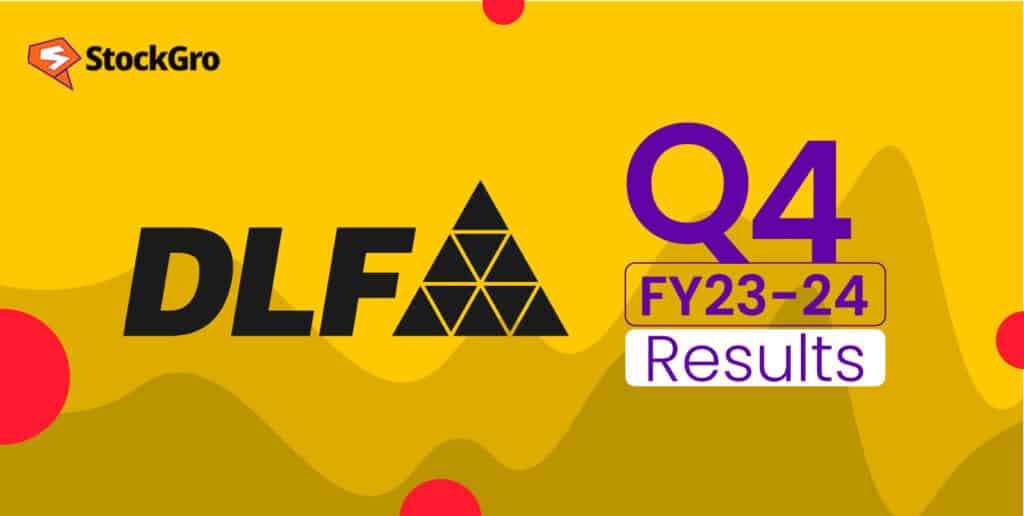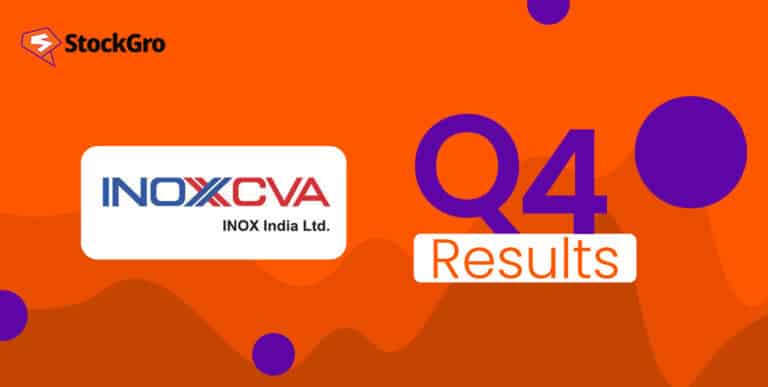
DLF, known as Delhi Land and Finance, holds the title of the largest real estate firm in India by market capitalization. The company has recently announced its financial results for the fourth quarter.
In this blog, we will explore the details of these results and what they indicate about the company’s current standing and future prospects.
Also read: Is real estate growth in India sustainable? Opportunities vs Challenges!
DLF overview
DLF Limited has been a famed player in India’s real estate sector for over 75 years. The group has developed more than 178 real estate projects and around 349 million square feet (msf) of space. It is pre-eminent for establishing major urban colonies in Delhi and DLF City in Gurgaon, one of Asia’s largest private townships.
The company’s operations extend to developing residential properties and leasing commercial spaces. DLF has a future development potential of approximately 215 msf.
On top of core activities, DLF has earned over 40 LEED Zero certifications from the US Green Building Council. In 2023, the company also accepted 20 Swords of Honour from the British Safety Council, acknowledging its commitment to safety and environmental standards.
You may also like: The Nifty Realty Index 2023: India’s real estate powerhouse
DLF results- Q4
DLF quarterly results briefed a consolidated revenue of ₹2,317 crore. The company’s gross margins were recorded at 60%, with an EBITDA of ₹936 crore. Strikingly, the net profit surged to ₹927 crore, marking a year-over-year (YoY) boost of 60%. The company delivered a healthy surplus cash of ₹1,105 crore from its operations.
At the same time, DLF’s development business sustained strong momentum, evidenced by a substantial sales booking of ₹14,778 crore over the year. Roughly 6 msf of new products were undertaken and were quickly absorbed by the market, actually monetizing almost the entire inventory during the launch period.
Looking forward, DLF intends to start over 11 msf of new products in various markets, including Gurugram, Mumbai, Goa, and Chandigarh Tri-city, seeking an estimated sales potential of about ₹36,000 crore.
The company’s emphasis on cash flow generation ushered in a record operational cash flow of ₹4,385 crore for the year, sweetening its net cash position to ₹1,547 crore by the end of the period. In addition, DLF’s cautious capital allocation continued with the acquisition of a strategic property in Sector-61, Gurugram, which has a prospect of approximately 7.5 msf and a calculated sales potential of over ₹20,000 crore.
| (₹ crore) | Q4 FY24 | Q3 FY24 | QoQ % | Q4 FY23 | YoY % |
| Revenue from operations | 2135 | 1521 | 40 | 1456 | 47 |
| Gross margin | 1274 | 857 | 49 | 835 | 53 |
| EBITDA | 936 | 633 | 48 | 518 | 81 |
| PBT | 802 | 512 | 57 | 397 | 102 |
| PAT | 927 | 649 | 43 | 581 | 60 |
In DLF share news, the company declared a dividend of ₹5 per equity share, depicting a 250% value of the face value of ₹2 each for the fiscal year 2023-24, pending shareholder approval. Further, the company disclosed the appointment of Ashok Kumar Tyagi as the Managing Director following Vivek Anand’s resignation, effective from February 29 2024.
Also read: Piramal Enterprises Q4 results: Key takeaways
FY24 earnings
For FY24, DLF declared consolidated revenues of ₹6,958 crore. The company retained gross margins at 57%, explaining solid financial management. The EBITDA for the course stood at ₹2,655 crore, supporting their operational efficiency.
The net profit for the fiscal year was at ₹2,733 crore, revealing a 33% increase compared to the last year. This growth was with a robust generation of surplus cash from operations, which amounted to ₹4,385 crore. This financial performance reflects DLF’s capacity to generate substantial cash flows while maintaining profitability.
DLF share price performance
Over the past year, DLF share price has seen a robust increase, culminating at ₹828.25. This represents a growth of 76.92% as of May 15. This upward trajectory in share price reflects the market’s positive reception to DLF’s financial and operational developments.
From a broader perspective, when we look at the DLF share price history over the last five years, the share price has escalated by 403.83%. This substantial growth indicates strong investor confidence and a steady appreciation of the company’s market value.
Strength & weakness
Strength
- Sustained operational performance: DLF is expected to maintain strong performance, with projected collection growth of 37-40% YoY in FY2024 and a further 26-28% in FY2025. This indicates robust revenue generation capabilities.
- Healthy financial leverage: The company’s gross debt to CFO (cash flow from operations) ratio is comfortably positioned between 0.9 and 1.1 times, suggesting prudent financial management and stability.
- Strong market position: With a well-established brand, particularly strong in the NCR, DLF has a commanding presence in various real estate segments including residential, commercial, and retail across major cities.
Weakness
- Risk exposure: Ongoing expansion into new markets introduces execution and market risks. This expansion is essential for growth but increases exposure to the cyclicality of the real estate sector.
- Regional dependence: The company’s significant reliance on the NCR market increases its vulnerability to local economic shifts, which could potentially affect sales performance.
- Contingent liabilities: DLF faces significant contingent liabilities related to taxes, indemnities to DLF Cyber City Developers, and penalties by regulatory authorities. The resolution of these issues could impact financial stability and cash flows.
Bottomline
DLF’s recent financial disclosures showcase both strength and strategic foresight in its operations, alongside a recognition of the challenges it faces. The company’s performance illustrates solid growth and revenue generation, supported by prudent financial strategies.
However, it must continue to manage the risks associated with its heavy reliance on the NCR market and the broad cyclical nature of the real estate industry. As DLF moves forward, the effectiveness of its strategic decisions will be key in maintaining its leadership in the real estate sector.

